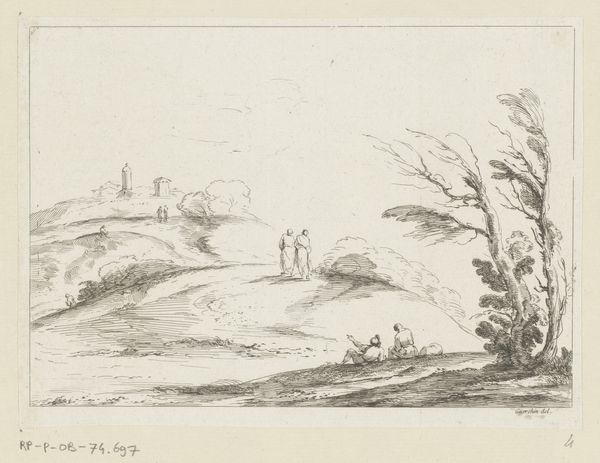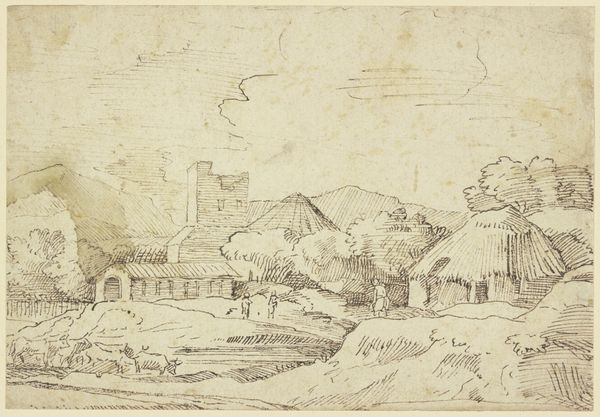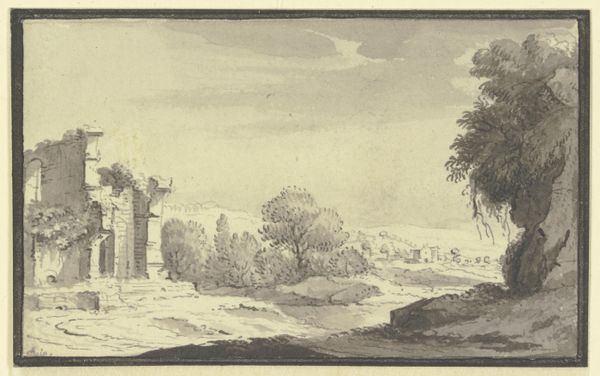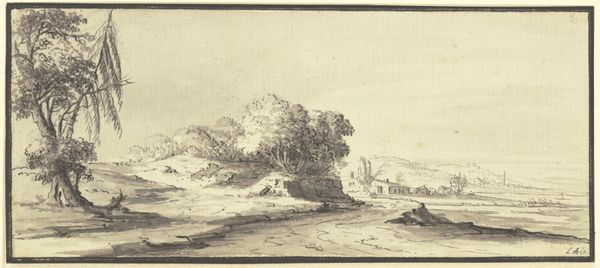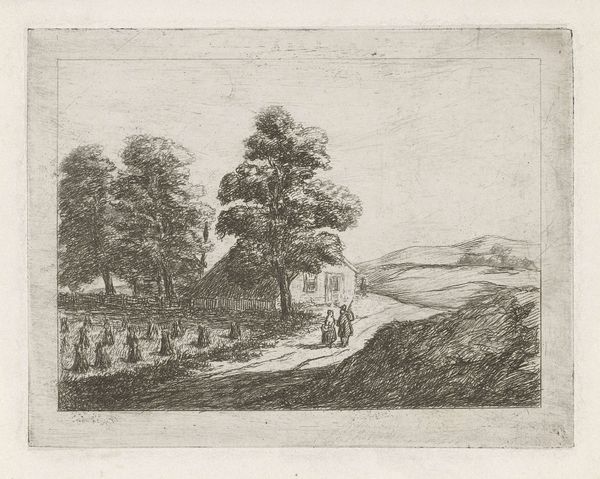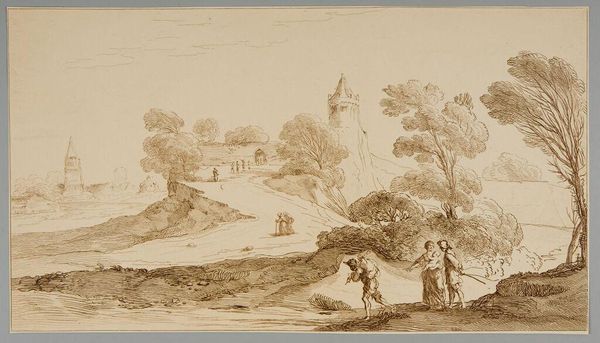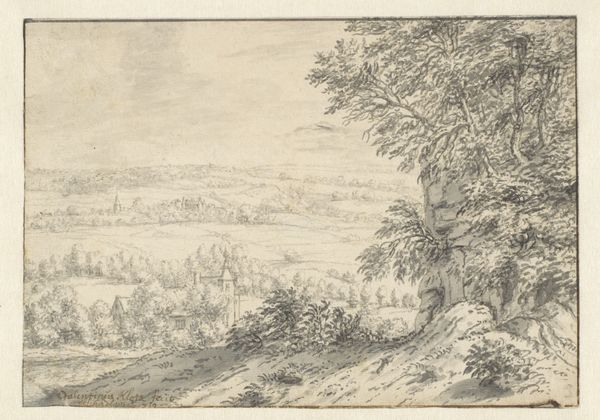
Rechts am Weg Hügel mit Gebäuden, auf demselben Eselstreiber und andere Figuren 1686
0:00
0:00
drawing, pencil, chalk, pen
#
drawing
#
baroque
#
landscape
#
pencil
#
chalk
#
pen work
#
pen
Copyright: Public Domain
Curator: Examining "Rechts am Weg Hügel mit Gebäuden, auf demselben Eselstreiber und andere Figuren," created in 1686 by Jan Vermeer van Haarlem the Elder, now held at the Städel Museum, reveals a delicately rendered landscape drawing in pencil, chalk, and pen. Editor: Immediately, I’m struck by how delicate the entire composition feels. It's as if the landscape is captured in a breath. You can almost feel the breeze suggested in the slightly leaning trees and gentle strokes defining the hillside. Curator: Vermeer masterfully orchestrates spatial depth through subtle tonal shifts and varying line weights. Notice how the buildings atop the hill, rendered with denser hatching, create a distinct visual weight in the upper right, contrasted against the lighter touch in the distant hills. The human figures, including the eselstreiber, act as repoussoir elements, guiding the eye into the receding landscape. Editor: I’m also curious about the paper itself. Its texture, the way it receives and reveals the graphite, is critical. The work, clearly a study of the textures—foliage, stone, rendered simply but suggesting form—speaks to the labor and process of the drawing itself as much as the depiction. How might the rough quality affect the overall read, contrasting against more traditionally prepared grounds? Curator: The artist employs pen work to define precise details, especially around the buildings, establishing a clear contrast with the softer, blurred effect achieved through chalk. This interplay between hard and soft, precise and atmospheric, gives the drawing a vibrant, lively feel. It emphasizes a calculated observation of structural elements in tandem with environmental subtleties. Editor: The distribution of labor across the social strata intrigues me. A figure on horseback contrasted to one leading a donkey. Where were these men headed? To market perhaps, or some similar means of trade? How might we consider this piece within the Dutch Golden Age economic context? The movement of people and goods across the land is a significant theme here. Curator: The atmospheric perspective, while simplified, enhances the illusion of distance, while the strategic use of chiaroscuro imbues the entire landscape with an almost palpable sense of light and shadow. This reflects a keen attention to baroque aesthetic ideals that prized dramatic, expressive compositions. Editor: Ultimately, viewing this artwork through the lens of materiality opens up questions of process, labor, and value during the Baroque period, connecting Jan Vermeer van Haarlem to larger economic forces that underpin his artistic endeavors. Curator: Agreed, a potent reminder that even in the quiet stillness of a landscape drawing, layers of formal nuance coalesce with historical depth, enriching our comprehension.
Comments
No comments
Be the first to comment and join the conversation on the ultimate creative platform.


